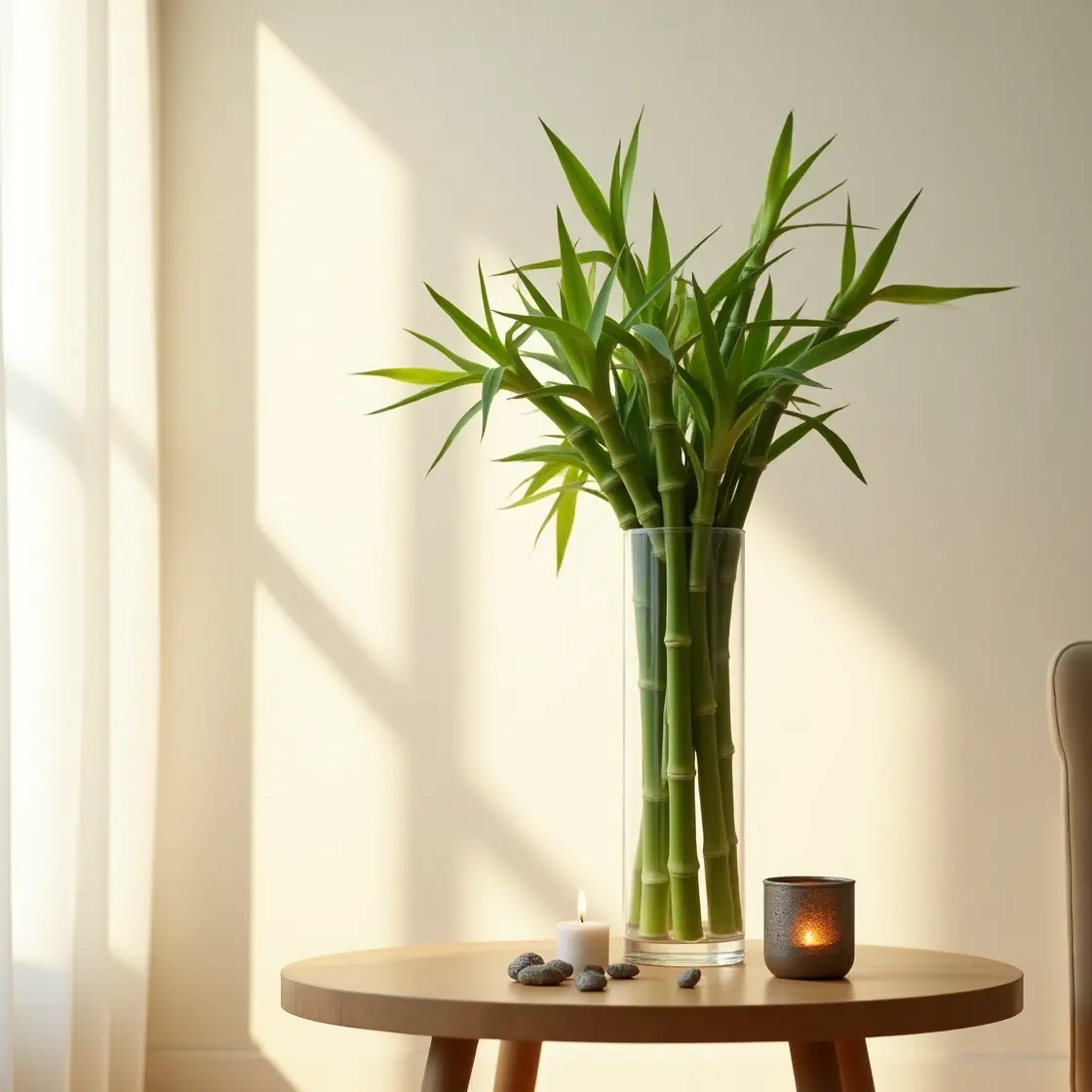Lucky Bamboo, known botanically as Dracaena sanderiana, is a beloved indoor plant admired for its graceful form and association with positive energy. Despite its resilient appearance, it requires attentive care to thrive. Many enthusiasts unintentionally make mistakes that can compromise its health. Here's a guide to common care errors and how to avoid them:

1. Using Untreated Tap Water
Tap water often contains chlorine and fluoride, which can be harmful to Lucky Bamboo over time, leading to yellowing or browning of leaves.
Solution: If tap water is your only option, let it sit uncovered for 24–48 hours to allow chemicals to dissipate. Alternatively, use distilled or filtered water to ensure optimal health.
2. Exposure to Direct Sunlight
While Lucky Bamboo is a tropical plant, direct sunlight can scorch its leaves and cause discoloration.
Solution: Place the plant in a location with bright, indirect light, such as near a north-facing window or behind a sheer curtain. This provides sufficient light without the risks associated with direct sun exposure.
3. Improper Water Levels
When grown hydroponically (in water), maintaining the correct water level is crucial. Too little water can dry out roots, while too much can submerge the stalks, leading to rot.
Solution: Keep 1–3 inches of water in the container, ensuring roots are submerged but stalks remain dry. Regularly check and adjust water levels as needed.
4. Neglecting Container Cleanliness
A dirty container can harbor bacteria, mold, and algae, which may cause unpleasant odors and harm the plant.
Solution: Clean the container and rinse the roots every two weeks. Use a soft brush or cloth to remove any residue inside the vase or pot.
5. Using Inappropriate Soil or Over-Fertilizing
For soil-grown Lucky Bamboo, heavy or poorly draining soil can suffocate roots, and excessive fertilizer can cause chemical burns or yellowing leaves.
Solution: Use well-draining, rich soil and fertilize sparingly—once every couple of months with a diluted liquid fertilizer. Less is more when it comes to feeding Lucky Bamboo.
6. Overcrowding or Excessive Pruning
Overcrowded stalks can restrict root development and airflow, while aggressive pruning can expose the plant to disease.
Solution: Trim leaves sparingly and only cut stalks above the nodes (the rings on the stem). If the plant becomes overcrowded, separate the stalks into multiple containers to encourage healthier growth.
7. Ignoring Signs of Stress
Yellow or brown leaf tips, mushy stems, or drooping leaves are indicators of stress, often due to poor water quality, excessive sunlight, or bacterial issues.
Solution: Promptly address these signs by removing damaged leaves or stalks, changing the water, and adjusting the plant's placement. Timely intervention can prevent long-term damage.
Conclusion
While Lucky Bamboo is relatively easy to care for, attention to detail is essential to prevent common pitfalls. By ensuring proper water quality, appropriate lighting, regular maintenance, and mindful pruning, your Lucky Bamboo can flourish, bringing beauty and positive energy to your space.